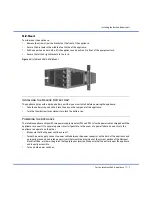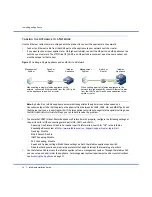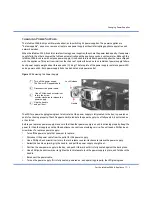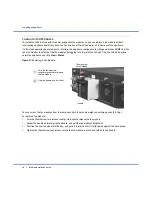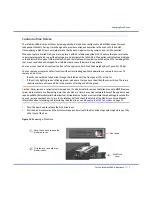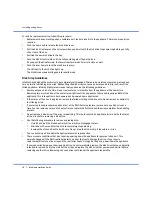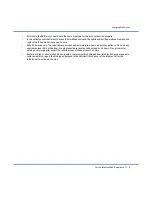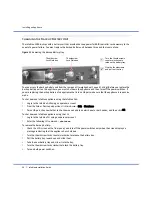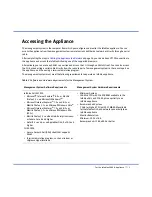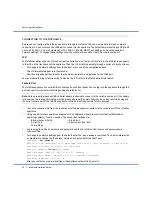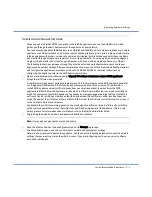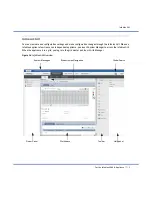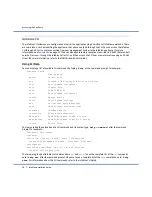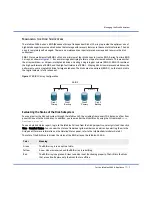
Managing the Disk Subsystem
For the Infoblox-2000-A Appliance
27
Managing the Disk Subsystem
The Infoblox-2000-A uses a RAID (Redundant Array of Independent Disks) 10 array to provide the optimum mix of
high database performance and redundant data storage with recovery features in the event of disk failures. The disk
array is completely self managed. There are no maintenance or special procedures required to service the disk
subsystem.
RAID 10 (or sometimes called RAID 1+0) uses a minimum of four disk drives to create a RAID 0 array from two RAID
1 arrays, as shown in
. It uses mirroring and striping to form a stripe of mirrored subsets. This means that
the array combines—or stripes—multiple disk drives, creating a single logical volume (RAID 0). RAID 10 combines
the high performance of RAID 0 and the high fault tolerance of RAID 1. Striping disk drives improves database write
performance over a single disk drive for large databases. The disks are also mirrored (RAID 1), so that each disk in
the logical volume is fully redundant.
Figure 17
RAID 10 Array Configuration
Evaluating the Status of the Disk Subsystem
You can monitor the disk subsystem through the Infoblox GUI, the scrolling front panel LCD display, and four front
panel LEDs next to the disk drives. In addition, you can monitor the disk status by using the CLI command
show
hardware_status
.
To see a detailed status report, log in to the Infoblox GUI and from the Grid perspective, select
grid
, and then click
View -> Detailed Status. You can view the status of individual grid members and services by selecting them in the
Grid
panel. (For more information on the
Detailed Status
panel, refer to the
Infoblox Administrator Guide
.)
The color of the RAID icon indicates the status of the RAID array on the Infoblox-2000-A.
Color
Meaning
Green
The RAID array is in an optimal state.
Yellow
A new disk was inserted and the RAID array is rebuilding.
Red
The RAID array is degraded. At least one disk is not functioning properly. The GUI lists the disks
that are online. Replace only the disks that are offline.
Disk 1
Primary
Disk 1
Backup
Disk 2
Primary
Disk 2
Backup
RAID 1
RAID 1
RAID 0

